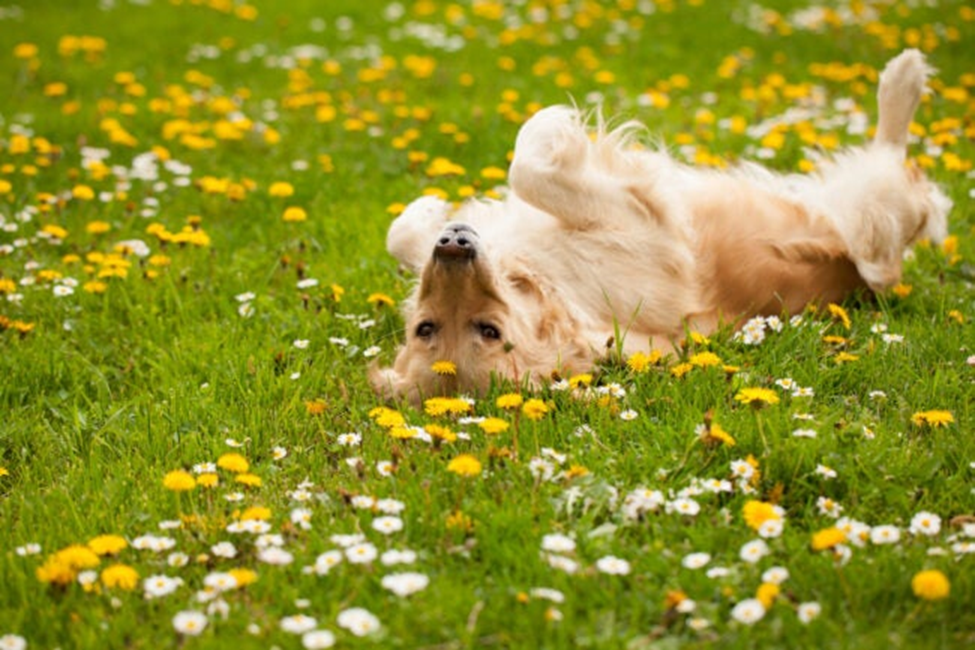
No Mow May
8 Reasons to Let Your Lawn Grow for a Month
When it comes to spring yard work, what if you could do more by doing less? By participating in No Mow May, you will spend less time, money, and energy on your lawn while helping to improve the planet.

First popularized in 2019 in the United Kingdom, No Mow May has taken root here in the United States. In 2020, Appleton, Wisconsin, became the first state in the country to adopt the practice in which you allow your lawn to grow throughout the month of May without mowing, watering, or fertilizing. Now, several communities are taking part in the effort.
No Mow May began to help bees and other pollinators, but there is more to it than that. Keep reading to learn why you should take a break from lawn care for a month.
1. You’ll get some beneficial spring color.
Not mowing throughout the month of May means you will be able to enjoy some flowers in your lawn you may otherwise lose to the lawn mower. Dandelions, clover, and the common blue violet start to bloom in the spring and can add some diversity to your lawn. In fact, in a 2019 survey, Plantlife, which is a British conservation charity and promoter of No Mow May, found 203 different species of beneficial flowers in lawns.
Dandelions, for instance, can help loosen hard-packed soil with their deep taproots. These root systems not only help aerate the soil but pull calcium and other nutrients from the ground and makes these nutrients available to other nearby plants, thus making dandelions a natural fertilizer!

Photo: istockphoto.com
2. Bees will get an early season boost.
In recent years, studies have found a steep drop in the bee population worldwide. In response, the United Nations says the decline could impact the global food supply, since 75 percent of the world’s food crops and 35 percent of global agricultural land depend on pollinators.
These early spring flowers such as dandelions and clover, help the local pollinator population at a time of year when nectar sources may be in short supply. That 2019 Plantlife survey found that 80 percent of lawns taking part in No Mow May supported about 400 bees each day!
3. You will cut down on pollution.
By not mowing your lawn during the month of May, you’ll give your lawn mower a break. Lawn mowers—unless electric—use gasoline, which contributes to air pollution.
Another aspect of No Mow May includes not using any fertilizers, herbicides, or pesticides during the month. Pesticides, for example, have been found by scientists to be a factor in the decline of honeybee colonies in both North America and in Europe.
4. You will save time and energy.
If you are not spending time mowing or spreading chemicals on your lawn during the month of May, that means you’ll have more time to do other things.
If you’re looking for other ways to help pollinators while not mowing, try adding some native plants to your yard. Native plants work great in garden borders and they support bees and other pollinators such as butterflies and hummingbirds as they offer nectar and seeds. They can also offer shelter for some animals, such as birds and small woodland creatures.

5. Your lawn will be healthier.
No Mow May does not just help pollinators, it can help your lawn for the better. By reducing the frequency in which you mow, your lawn can become more resilient to drought. Plus, it will not require as much watering.
Each year, the Environmental Protection Agency estimates that 1/3 of all residential water use goes to landscape irrigation. That translates to 9 billion gallons each day! You can help reduce that number by taking part in the No Mow May campaign.
Photo: istockphoto.com
6. You do not need to go all in.
If you are the type of homeowner who likes a freshly manicured lawn and No Mow May seems a bit too extreme for your taste, there is plenty of room for compromise. In addition, if you live in a community that won’t allow for No Mow May due to certain lawn ordinances in place, there are some things you can do in your yard while still participating.
Try setting up bee hotels, which give bees shelter. You can mow just an edge of your lawn so the grass length seems less overwhelming and will look less neglectful and more intentional than just not mowing altogether.
7. Your lawn may teach you some things.
You may learn some things from your lawn throughout the month of No Mow May. For instance, you may discover you like a longer length of grass, so you start mowing every three weeks instead of every week. You may find that the clover that is allowed to grow when you do not mow is softer than your grass, which makes you want to grow more clover. You may learn all those dandelions are not so bad. You may find you were watering too often, or your lawn doesn’t need that spring dose of fertilizer. Think of No Mow May as a learning experience in how to better tend to your yard.

Photo: istockphoto.com
8. You may decide to go grass-free.
Sure, grass can be beneficial for playing ball in the yard or relaxing on the weekend, but you may decide the maintenance of a traditional lawn is not worth it anymore. In place of your grass, consider alternatives such as native plants or prairie grasses—both of which help pollinators. Maybe a rain garden or a wildflower meadow is right for your yard. By ditching the traditional lawn and going with a pollinator friendly yard, you can save when it comes to time maintaining, watering, and adding chemicals. Plus, you help the environment!